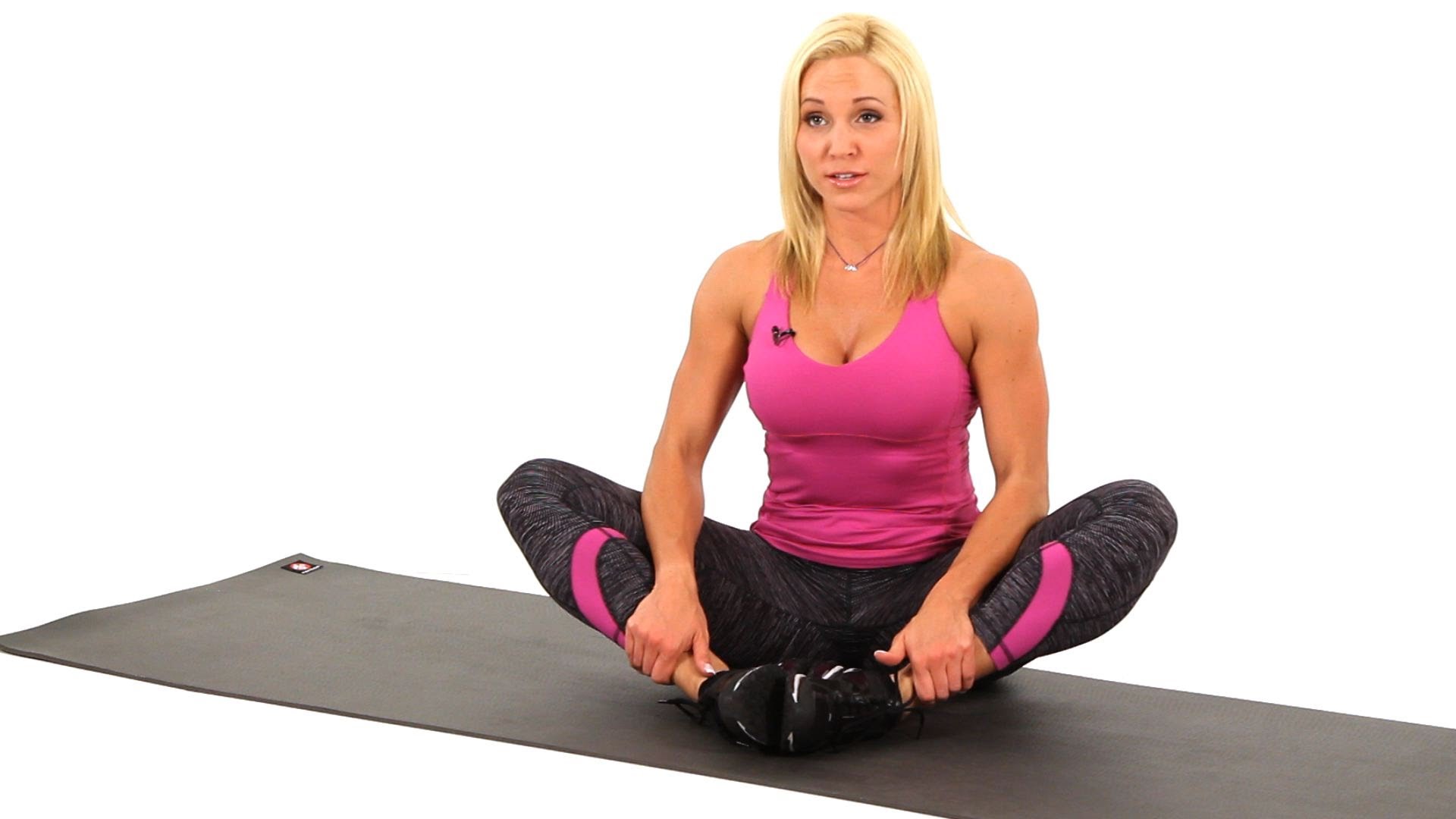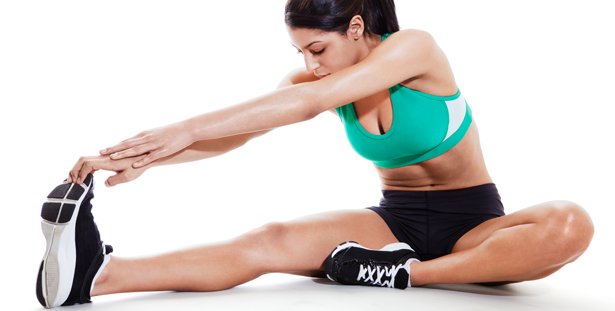An inner thigh strain is common among athletes and those who sometimes use sporadic twisting movements in their exercises. But in all reality, even a stepping motion or holding one position for too long can result in an inner thigh injury. Pulled inner thigh muscles can be quite frustrating, due to the hindrance of mobility, repeated injuries and relatively long period of healing process. Proper treatment is important so that swelling, inflammation, and the development of scar tissue are limited, and doing stretches in proper manner can be helpful for such injuries.
Causes and Symptoms of Pulled Inner Thigh Muscles
1. Symptoms
At the moment this injury occurs, you are likely to hear or feel a muscle in your inner thigh go pop. You may also experience pain, tenderness, swelling, warm sensation, and redness in the injured area. The pain may worsen when you move the hip, and you may observe bruises in the injured inner thigh region.Muscle spasms can also occur. If there is a complete rupture of the muscle, you may feel a lack of fullness in the groin area.
2. Causes
There are many causes of pulled inner thigh muscles. These causes vary case by case, however, some are relatively common. Prolonged overuse of or a sudden increase in the intensity of an exercise or activity involving the inner thigh can lead to injury. For otherwise sedentary people, a single instance of intense unusual activity, such as kicking, can also lead to injury. Another less common cause is a strong blow to the inner thigh area, as in contact sports or even in violent situations.
Risk factors: Besides those relatively common causes of pulled inner thigh muscles, you should also take care of certain risk factors. The risk such an injury increases with sports that require kicking, such as soccer and football, and also sports such as horseback riding and gymnastics, where muscles are used to keep the legs together. Sports that require fast pace and quick acceleration such as ice hockey and track and field can also increase the risk of incurring injuries to the inner thigh. Other risk factors are previous episodes of thigh injury, and also inability to be flexible and a lack of strength in the legs.
When to Seek Medical Help
Based on the degree of pulled inner thigh muscles, there are a few symptoms that are signposts for seeing a doctor, including difficulty in walking, pain while sitting or lying down, and pain in the injured region at night. This is quite essential for the possibility that the muscle may have ruptured completely and will require surgery.
In general, if your symptoms are not subsiding after a few days of being injured, you should go see a doctor. There may be other instances where you notice unusual issues. These are complications that you should be aware of and should notify your doctor about immediately.
How to Relieve Pulled Inner Thigh Muscles
1. Rest
As a general rule, you must rest when you have injured your inner thigh. If it hurts while walking, you should not be walking around unnecessarily. Any activity that brings discomfort should be stopped for a while.
2. Ice Compression
You can ice the injured area for fifteen minutes, every three hours. This method is particularly important to do within the first three days of your injury, which will bring the swelling down.
3. Build up Strength
Once you feel that your pulled inner thigh muscles have healed completely and the inner thigh does not feel painful anymore, do some inner thigh exercises so as to regain strength gradually. This can help protect the injured area as well as prevent repeated occurrence.
4. Do Some Stretches to Help
There are some tested and effective stretches to help with your pulled inner thigh muscles. Here we list some common and easy to do stretches.
Safe stretching: Stretching improves flexibility and prevents injuries in the future. When you stretch, only go as far as you don't feel pain. Hold the position for a maximum of 25 seconds. Make sure you breathe deeply while you stretch.
 Seated straddle stretch. This stretch targets the whole thigh muscles. Sit comfortably with your legs spread apart, tighten your abs, and straighten your spine. Inhale, and as you exhale, bend at your waist and go as far forward as you can. Hold for 25 seconds, then return.
Seated straddle stretch. This stretch targets the whole thigh muscles. Sit comfortably with your legs spread apart, tighten your abs, and straighten your spine. Inhale, and as you exhale, bend at your waist and go as far forward as you can. Hold for 25 seconds, then return.
 Butterfly stretch. Sit with your back straight, legs on the floor and knees bent. Bring your soles together and inwards to your crotch. With elbows on the inside of your knees, lean forward and push the knees down with your elbows. Hold for 20 seconds then return and repeat.
Butterfly stretch. Sit with your back straight, legs on the floor and knees bent. Bring your soles together and inwards to your crotch. With elbows on the inside of your knees, lean forward and push the knees down with your elbows. Hold for 20 seconds then return and repeat.
 Hurdler stretch. Stand on your healthy leg, toes pointing forward. Stretch the injured leg behind, toes pointing forward. Drop your pelvis towards the floor as you bend the injured leg at the knee. Hold for 20 seconds and then return and repeat.
Hurdler stretch. Stand on your healthy leg, toes pointing forward. Stretch the injured leg behind, toes pointing forward. Drop your pelvis towards the floor as you bend the injured leg at the knee. Hold for 20 seconds and then return and repeat.
5. Medications
At times, medication may be important for curing pulled inner thigh muscles. Aspirin or ibuprofen can be sufficient to relieve pain; however, these medications should not be taken for a week prior to surgery. Ointments that apply to the injured area can be useful as well. For inflammation, corticosteroid injections may be administered.
6. Surgery
Usually, the aforementioned conservative treatments will do the trick. But there are some exceptions then you may want to consider surgery. While surgery may give relief, it is a last resort. Not everyone can return to his or her previous level of activity after a surgery. Talk the pros and cons of surgery with your doctor. Also consider getting a second opinion.
Possible complications include the following:
If the pulled inner thigh muscles are not treated timely or appropriately, healing time may be prolonged. For not sufficient healing time or getting back to your activities too soon, you may experience recurrence of symptoms and repeated injuries. In severe cases, the strain may progress into a prolonged disability, a complete rupture or another injury by limping and favoring the injured leg, if the injury is left untreated
How to Prevent Pulled Inner Thigh Muscles
Some precautions can always be taken to prevent inner thigh injury. You should condition your muscles with exercises specifically designed for the thigh, and make sure you stretch before and after exercise. Always warm up before any workout or sports activity, and take time to do a proper cool down after a workout session. If you do get injured, consult a physician or a personal trainer, and take all the time to heal and don't resume activity too soon or you will get injured again.
